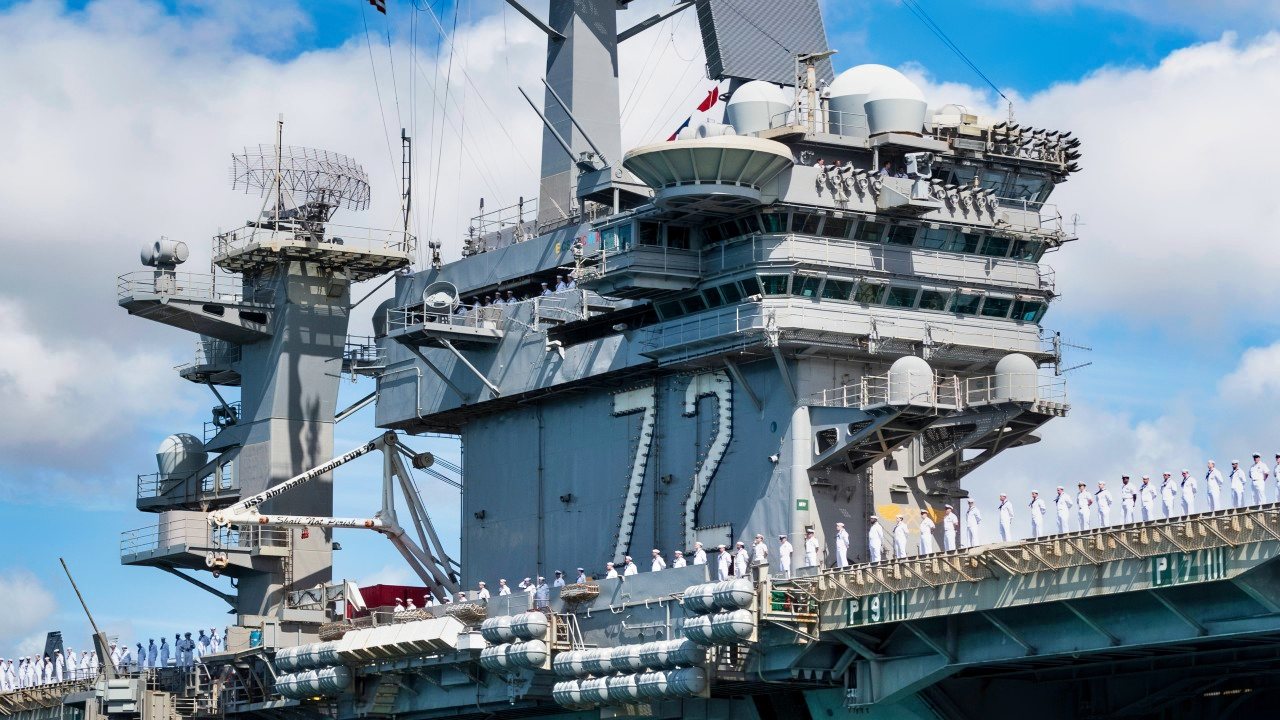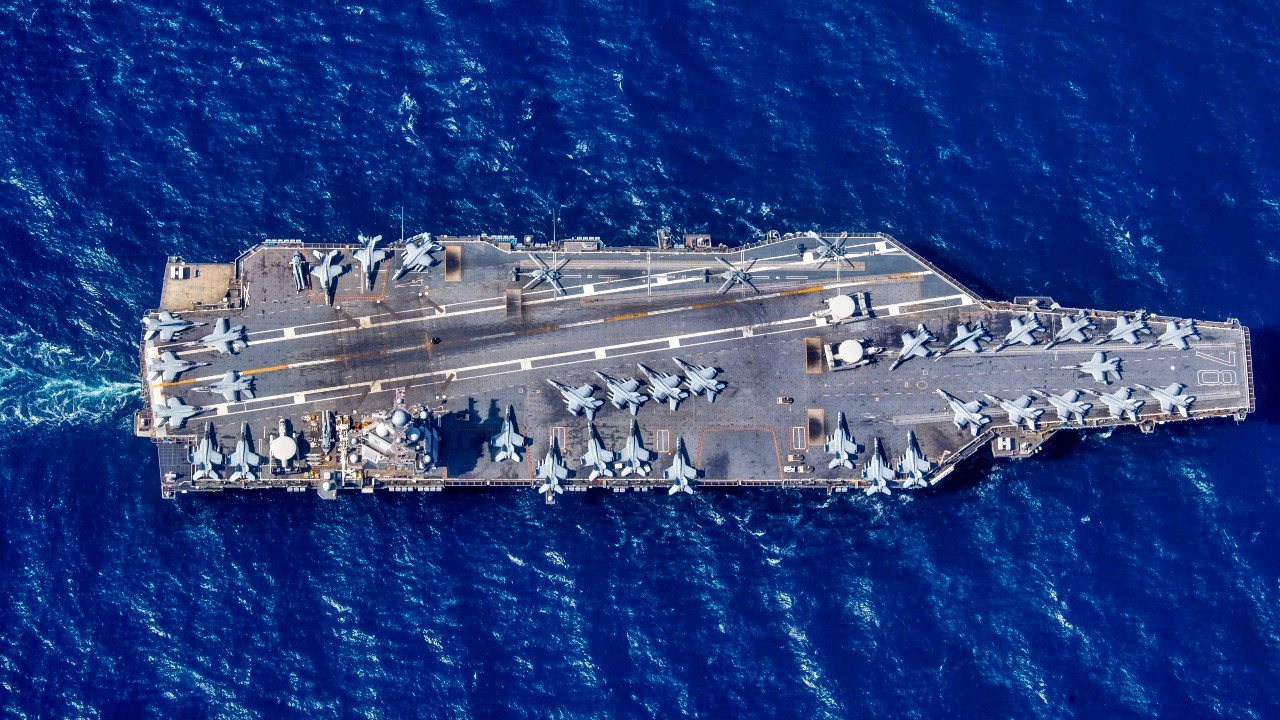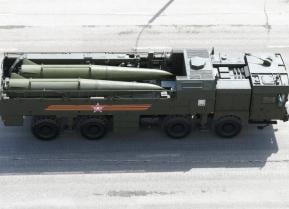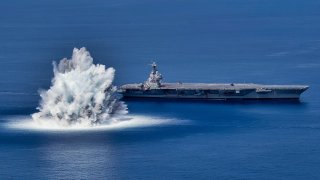Should Donald Trump Risk the U.S. Navy in a War Against China?
As the U.S. Navy faces potential conflict with China in the Pacific, leaders must decide when to risk their valuable, hard-to-replace capital ships, such as Ford-class carriers, in battle. In a potential Taiwan conflict, China would likely commit extensive forces, while the U.S. might hesitate due to public opinion and fleet dispersion.
When should you hazard pricey, hard-to-replace capital ships in battle? That question has vexed wartime naval commanders as long as there have been navies to command. Nor is it hard to see why. Societies sink inordinate resources into ships of war. Cruisers, destroyers, and submarines are what economists term “lumpy capital,” costing taxpayers upwards—commonly well upwards—of $1 billion per copy. Aircraft carriers are the lumpiest of them all. Any sane commander would think twice before sending a $13.3 billion ship of the line like a Ford-class nuclear-powered carrier in harm’s way.
That’s a lot of public capital to wager—and perhaps lose—in an afternoon. That America’s standing in the world depends on sea power only compounds commanders' qualms before giving the order dispatching major combatants into a fleet action.
That being the case, fashioning a risk calculus ahead of time is no idle exercise. Senior uniformed and civilian leaders warn that the balloon could go up in the Western Pacific in the next two or three years. Many within the Beltway bandy about 2027 as the prime danger zone. When and if it breaks out, a new Pacific war would presumably see a domineering China mount a cross-strait invasion of Taiwan. Chinese Communist Party supremo Xi Jinping has certainly ordered the People’s Liberation Army (PLA) to be ready for military action by 2027, while confounding aggression and preserving the island’s de facto independence would be the point of U.S. and friendly military intervention.
Predominant trendlines, then, make the waters, skies, and landmasses shoreward of Asia’s second island chain today’s likeliest oceanic battleground. That’s where commanders and their political masters may have to gauge whether to risk the U.S. Navy battle fleet. Some pivotal questions they must ask themselves:
Who wants it more? Naval historian and theorist extraordinaire Alfred Thayer Mahan explains how to size a fleet or fleet contingent for high-seas success. Simply put, a fleet must boast enough combat power to win the fight it seems likely to fight. A “broad formula,” writes Mahan, is that the fleet “must be great enough to take the sea, and to fight, with reasonable chances of success, the largest force likely to be brought against it . . . .”
An easy formula to state, a hard one to implement. We’ll come back to the operational part—reasonable chances of success, to borrow Mahan’s phrasing—below. For now let’s estimate, or at least ponder how to estimate, how large a share of its navy each antagonist seems likely to commit to battle in the Western Pacific. What each contender commits sets the standard of adequacy for its opponent. This is a geopolitical question. Answering it is largely subjective. In the Western Pacific, it involves estimating how much American and Chinese societies treasure conflicting goals in a war over Taiwan. The more ardently each contestant craves its goals, the more generously it will apportion forces to obtain those goals.
How much you want something governs how much you're willing to pay for it, and for how long.
China covets Taiwan a great deal indeed, which is why Beijing tends to keep the bulk of the PLA Navy and affiliated joint forces concentrated close to home. The leadership is prepared to invest heavily in conquest of the island, and to sustain the investment for as long as it takes. The United States, on the other hand, ranks Taiwan’s de facto independence as one desirable goal among many scattered across the globe. U.S. leaders could waffle in times of strife as they debate priorities. Whether they would stomach the opportunity costs of leaving, say, the Red Sea uncovered for Taiwan’s sake appears doubtful judging from the fleet’s current disposition. Fleet units are dispersed on various errands, chiefly around the Eurasian periphery. They are not concentrated in the Indo-Pacific, the theater successive presidential administrations have assigned paramount importance.
Advantage: China.
That being the case, it seems clear that a fraction of the U.S. Navy and Marine Corps, operating alongside the Air Force, the Army, and whatever allied forces join in, will confront the combined weight of the Chinese armed forces on China’s home ground. As the lesser combatant, at least at the outset, Washington will court severe risk to the fleet should it take a Mahanian approach to shielding Taiwan from assault. The White House must consult with Congress and the American people, appraising—and, if necessary, combusting—popular passion on behalf of the island’s defense. No liberal society can sustain a strenuous war effort for long absent such fervor.
Better to forego the endeavor if popular sentiment fails to catch fire. The White House should reject wagering precious ships and crews for a cause about which ordinary citizens and their elected representatives care little. Conserve the fleet for another day.

Think grand strategically. Admiral Chester Nimitz had it easy by comparison to today’s leadership, and the reason why was industrial in nature. When Nimitz assumed command of the Pacific Fleet at Pearl Harbor in late December 1941, he knew that shipwrights were riveting together a shiny new fleet back home, courtesy of the Two-Ocean Navy Act of 1940 and past naval expansion laws. In effect America was constructing a second complete U.S. Navy. New hulls would start appearing in Pacific waters in mid-1943. Knowing that allowed Nimitz to gamble with the remnants of the fleet battered at Pearl Harbor. He might lose the remains of the prewar armada, but defeat would be temporary and reversible. In the meantime he might do the cause some good.
If you have a spare of something on the way, why not roll the dice with the one you have?
The outlook is less sanguine today. Nimitz’s distant successor, Admiral Samuel Paparo, commander of the joint U.S. Indo-Pacific Command, will fight with the fleet he has. That’s because an atrophied U.S. maritime-industrial complex is struggling to manufacture and maintain surface combatants in peacetime. How will shipbuilders cope when battle losses mount up, imposing extra demand on the system? If Admiral Paparo cannot count on industry to repair or replace damaged ships, a risk-averse posture seems like his best bet.
The ability to regenerate strength after a fight cushions against catastrophe, and permits risk-taking with the force. That is not a luxury Paparo enjoys. Circumstances will compel him to husband his capital ships while his PLA Navy antagonists, backed by China’s mammoth industrial complex, could choose to fling caution to the wind.
But winning might not demand a Mahanian fleet-on-fleet engagement. The upside to this dreary prognosis is that the U.S. Navy might not have to wage a titanic fleet engagement early on in order to vanquish China’s strategy. Heck, conceivably it might not need to risk a high-seas engagement at all. Wise strategic and operational design could spare the fleet a decisive battle until such time as the U.S. military can amass combat power in the theater sufficient to win a Mahanian encounter. Risk postponed is risk managed if commanders play things right.
Success requires that commanders keep their priorities straight. Sinking the PLA Navy in battle is not the point of U.S. Western Pacific strategy, desirable though it might be. Defeating China’s strategy is the point. Ensuring Taiwan’s survival means preventing an invasion fleet from crossing the Taiwan Strait, mounting amphibious landings, and occupying the island. And many implements out of the martial panoply—not just capital ships—could stymie an amphibian offensive.
Chief of Naval Operations Lisa Franchetti alludes to this in her recent “Navigation Plan,” where she exhorts the sea service to gird itself for “nontraditional sea denial.” Admiral Franchetti tacitly and correctly admits that the U.S. Navy will be the lesser contender on day one of a Western Pacific maelstrom. After all, sea denial is a strategy of the weaker pugilist, designed to balk a brawnier foe by denying it the fruits of maritime command. Fruits such as the ability to move amphibious shipping across the sea to land on hostile beaches.
That sounds discomfiting for a force like the U.S. Navy, accustomed as it is to ruling the waves. But take heart: the weak sometimes prevail in warfare provided they do things right.
And indeed, embracing a sea-denial strategy in the Western Pacific should comfort fretful stewards of the U.S. Navy battle fleet. It doesn’t necessarily take a capital ship to bar the PLA’s access to vital seaways. Missile- and torpedo-laden submarines are sea-denial assets par excellence. So are surface missile patrol craft such as those deployed by allies. Moreover, fighting jointly spreads risk across the entire force, encompassing not just the seagoing but land-based arms of maritime might. Missile-toting aircraft can strike out to sea, lending their firepower to the sea-denial mix. Unmanned aerial, surface, and subsurface craft have a growing part to play. Strategically placed minefields can encumber Chinese maritime movement.

And don’t neglect ground forces. Bodies of missile-armed troops dispersed along the island chains can cut loose against naval and merchant shipping, obstructing access to waters Chinese vessels must traverse to help China fulfill its war aims. The U.S. Marine Corps and Army are planning to do just that.


